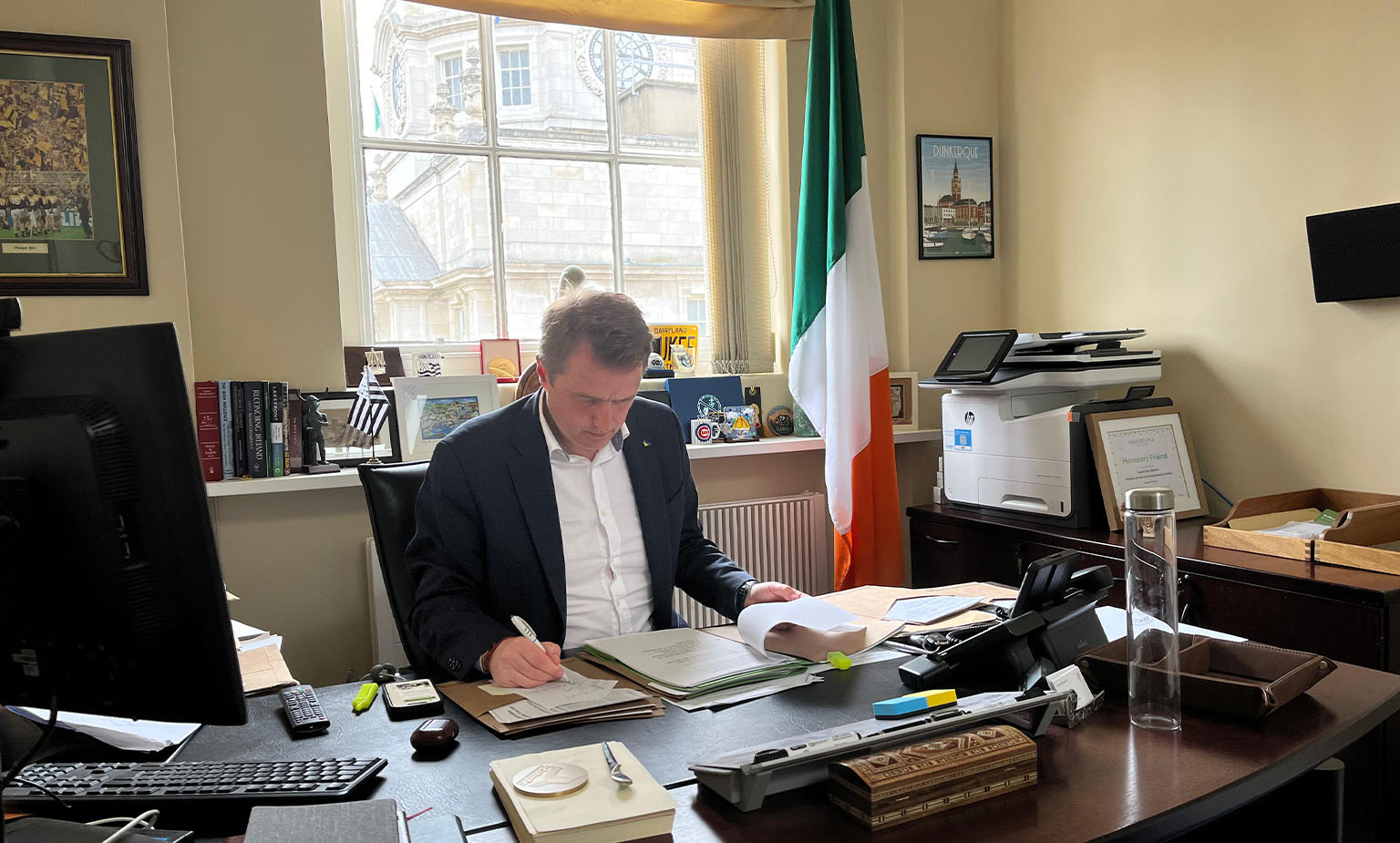Balancing rights and preventing harm: A dual approach to defamation law and gambling regulation

In 2024, I have been working on significant reform in the areas of defamation law and gambling regulation in Ireland. These laws will be progressed when Oireachtas business resumes in autumn 2024. Minister of State with responsibility for International Law, Law Reform and Youth Justice, James Browne TD, writes.
These initiatives are part of a broader government commitment to safeguarding public welfare and protecting the vulnerable, to enhancing access to justice, and strengthening our democracy by promoting reasoned debate and discussion within our public realm.
These laws will secure a delicate balance of preserving individual freedoms while establishing robust protections against harm.
Reforming defamation laws
The new Defamation (Amendment) Bill 2024 is a big step forward in updating Ireland’s defamation laws to fit today’s fast-paced media environment.
For the average person, if someone harms your reputation, this Bill will make it easier, quicker, and less expensive to get justice. It balances the right to free speech with the need to protect a person’s good name, ensuring that you can defend your reputation without the lengthy and costly processes that might have held you back before.
In addition to these changes, the Bill promotes alternative dispute resolution mechanisms. This will encourage prompt corrections and apologies, when warranted, aiming to resolve disputes amicably and cost-effectively. This approach not only avoids the need for court proceedings, but also fosters a more conciliatory environment for addressing genuine grievances and errors.
The abolition of juries in High Court defamation cases is designed to reduce unpredictable and at times disproportionate damages awards.
In developing this Bill, I was conscious that we must strike an appropriate balance to ensure that costs, risks, and outcomes in defamation proceedings are more proportionate and less uncertain. This is important both to improve access to justice generally, and to avoid any chilling effect of defamation proceedings on the freedom of the press.
The proposed changes are intended to streamline legal processes, curtail excessive legal costs, and speed up resolution of disputes.
The Bill also introduces measures to combat strategic lawsuits against public participation (SLAPPs). These lawsuits, often used to muzzle journalistic endeavours and silence critics, pose a significant threat to democratic discourse and press freedom.
By implementing protections against SLAPPs, the Bill not only supports investigative journalism but also fortifies democratic principles by ensuring that matters of public interest can be freely explored and debated.

Establishing a gambling regulator
The Gambling Regulation Bill 2022 is designed to protect consumers by creating a comprehensive regulatory framework for gambling which will address the complexity of the modern gambling industry, particularly the rise of online betting, accessible 24/7 via smartphones.
“The reforms being put into effect seek to create a fairer, safer society where justice is accessible, rights are respected, and vulnerable individuals are protected from harm.”
Minister of State with responsibility for International Law, Law Reform and Youth Justice, James Browne TD
Every person, including children, now carry a mobile casino in their pocket. This ease of access has led to increased problem gambling, especially amongst younger users.
The anonymity and global reach of online platforms make it harder to prevent problems like addiction and illegal activities such as money laundering. The establishment of a new Gambling Regulatory Authority of Ireland is core to the Government’s commitment to ensuring robust safeguards are in place to protect public safety and wellbeing in this rapidly evolving landscape. It will mark a significant shift from outdated regulations to a robust, modern oversight mechanism.
The core objectives of the new regulator include preventing gambling-related crimes, ensuring fair and transparent gambling practices, and promoting responsible gambling to combat addiction. The new regulator will have the power to regulate both online and in-person gambling, manage advertising standards, and enforce compliance among operators.
One of the most noteworthy aspects of the Bill is its focus on protecting vulnerable individuals, particularly children, from the risks associated with gambling.
Measures such as prohibiting gambling advertisements that appeal to minors, banning the use of credit cards for gambling, and establishing a National Gambling Exclusion Register are pivotal in mitigating the potential harms of gambling addiction.
The Social Impact Fund, financed by industry contributions, will further support research, awareness campaigns, and treatment programs for problem gambling, ensuring a comprehensive approach to public health and safety.
A balanced approach
Both legislative initiatives reflect a careful balancing act between upholding individual rights and instituting necessary protections.
In the case of defamation reform, the emphasis is on fostering an environment where freedom of expression and the protection of reputations can coexist and operate in unison.
For gambling regulation, my focus has been on creating a safe gambling environment, recognising the industry’s economic significance while at the same time being alive to the social challenges it presents.
The policy decisions I have made in these areas stem from a belief in the importance of proportionality and transparency in legislative reforms. These bills, shaped by extensive public and stakeholder consultation and careful consideration, aim to address the specific risks associated with defamation and gambling. By doing so, the reforms being put into effect seek to create a fairer, safer society where justice is accessible, rights are respected, and vulnerable individuals are protected from harm.
Ultimately, the success of these reforms will be measured by their ability to enhance public trust, support responsible behaviours, and uphold the rights and protections essential to a just society.
Both the defamation and gambling regulation bills are necessary to keep pace with the rapid technological changes that have transformed how we communicate, are influenced and behave. These reforms are designed to address the new challenges and risks that have emerged in our increasingly digital world, ensuring that our laws remain relevant and effective.
As the legislative process continues, I look forward to working with my colleagues to aid the passing of these significant and worthwhile updates to the statute book.





